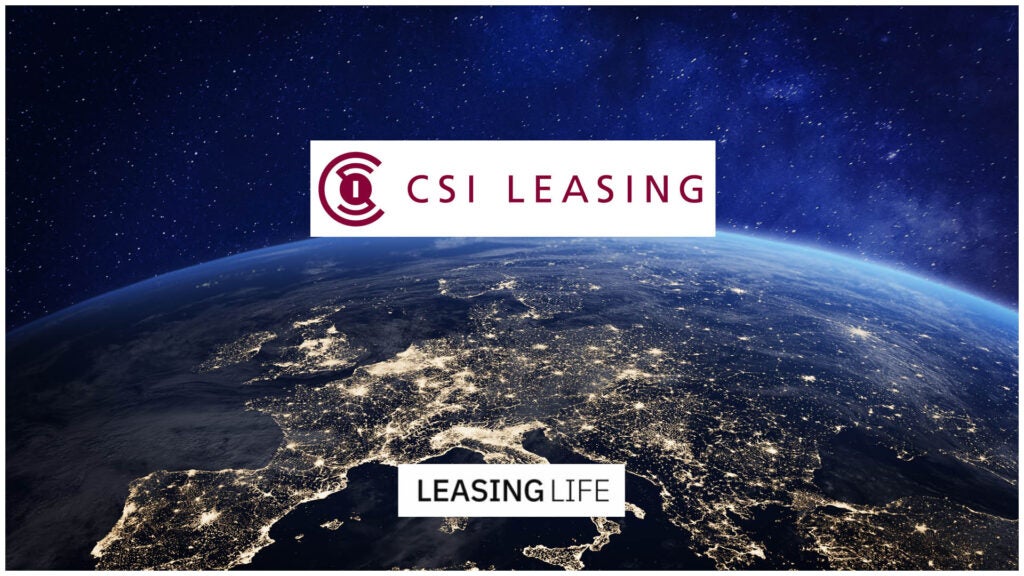Having written last month about
Californian Textainer’s strategic buyout of British container fleet
Amficon, a well-timed Transport Logistics exhibition in Munich
provided the opportunity to get he word on how the state of the
global container leasing market is impacting on the market for
leasing of intermodals – containers that can be used on roads and
rail as well as by sea.
So, first off, how exactly is the container
lease market faring? Chris Munford, publishing director of
World Cargo News, said last month the global market had
flattened to the point where there was little for him to write
about in 2009.
In sharp contrast, his magazine published a
comprehensive article on the container lease market back in Q3 last
year.
A look through the Q1 statistics of the three
global fleets listed on the NYSE seemed to confirm this – Textainer
saw quarterly revenue down 18 percent, while CAI and TAL
International saw respective income decreases of 24 percent and 20
percent year-on-year. Meanwhile, many Chinese factories
specialising in the manufacture of many of the world’s containers
have closed down.
Global deep sea fleets also seem desperate as
they continue to leverage their size and drive down lease prices
enough to win over more of the shipping industry’s dwindling cargo
capacity.
So, as the global container lease market
dwindles, what about its sister business, the intermodal
market?
How well do you really know your competitors?
Access the most comprehensive Company Profiles on the market, powered by GlobalData. Save hours of research. Gain competitive edge.

Thank you!
Your download email will arrive shortly
Not ready to buy yet? Download a free sample
We are confident about the unique quality of our Company Profiles. However, we want you to make the most beneficial decision for your business, so we offer a free sample that you can download by submitting the below form
By GlobalDataBusiness for intermodal lessors in European
“short-sea” waters, he suggested, may have been affected by the
recession differently to that of the deep-sea superfleets due to
their isolation from the global market by the idiosyncracies of
European intermodal assets.
However, Bob Walker, sales director of 45ft
intermodal specialist Container Leasing UK and multi-decade veteran
of the industry, said that the situation in Europe is still fairly
bleak.
The collapse of Irish trade and movement
across the English Channel, he said, has driven down the marine
market to the point where hundreds of thousands of intermodal
containers are stacked idle in European ports.
Walker said that the depression in marine
traffic has been mitigated to some extent by increased utilisation
of leased intermodal containers by operators keen to reduce capex,
but that any benefit has been largely eclipsed by a collapse in
pricing – the inevitable knock-on effect of the price war on the
high seas.
Jan Koolen of Unit 45 – the other leading
lessor in the same market as intermodal specialist Container
Leasing UK – agreed that marine cargo rates are down between 30
percent and 40 percent in Europe, but said that this decline seems
to have bottomed out. He added that a slower decline in road
freight volumes – for which 45ft intermodals are also usable – has
taken some of the slack from marine oversupply.
Both Walker and Koolen agreed that providers
of specialist containers (such as their own 45ft Europe-specific
intermodals) are seeing more demand than fleets heavily geared
towards standard dry box containers. After all, the acquisition of
Amficon has been motivated by Textainer’s desire to accumulate the
British lessor’s more specialised units for this very reason
(although Amficon’s units had not been European Intermodals).
So, are companies such as Unit 65 and
Container Leasing likely to be consumed by the deep-sea giants in
order to unlock the remaining demand in the European Intermodal
market?
Unlikely, it would seem. At a time like this,
few fleets are likely to move into a market they do not fully
understand, meaning that a move into specialist Eurocontainers is
just too great a risk for even the Textainers and the GE SeaCos of
the world to consider.
But even though the deepening of the
supply/demand crisis for the container industry may have bottomed
out with the shutdown of factories in China and shipping level
decreases, even specialised short-sea operators will continue to
suffer over the coming months while the world’s ports are full of
unused containers.
Fred Crawley







